Email Address enquiry@pellet-richi.com
Phone/Whatsapp 0086-13838389622
Email Address enquiry@pellet-richi.com
Phone/Whatsapp 0086-13838389622
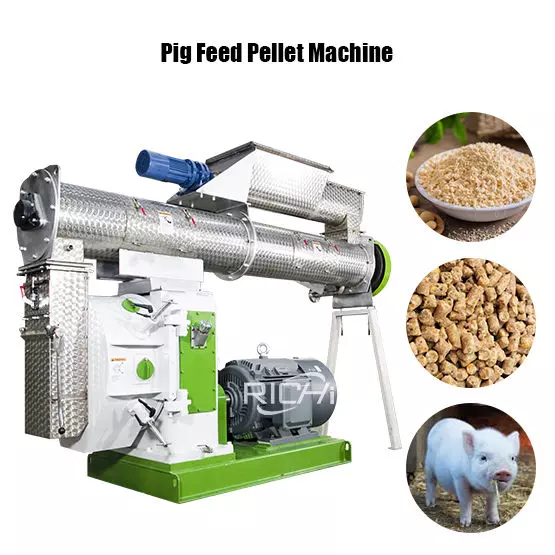
The pig feed pellet machine is a piece of equipment widely used in animal husbandry. It improves the nutritional value and digestion and absorption rate of pig feed by processing feed raw materials into pellets. Pellet feed processing technology has been used for many years, and pellet feed has been widely used in the pig breeding industry. The pig pellet feed made by pig feed pellet machine can be made from a single feed or a formulated full feed through compression technology. The pellet feed is usually cylindrical and has different sizes. In the feed industry, the process of forming powdered feed materials through water and heat modulation and mechanical compression and forced passage through the die holes is defined as pelleting.
After the various raw materials of the pig feed are grinded and mixed, they can be used as powder for feeding or for further processing, and heating or pressure is usually required during processing. Making them into pellets is the most common method. The RICHI pig feed pellet making machine can be used to process pig feeds of different breeds and growth cycles, such as piglet feed, fattening pig feed, and sow feed.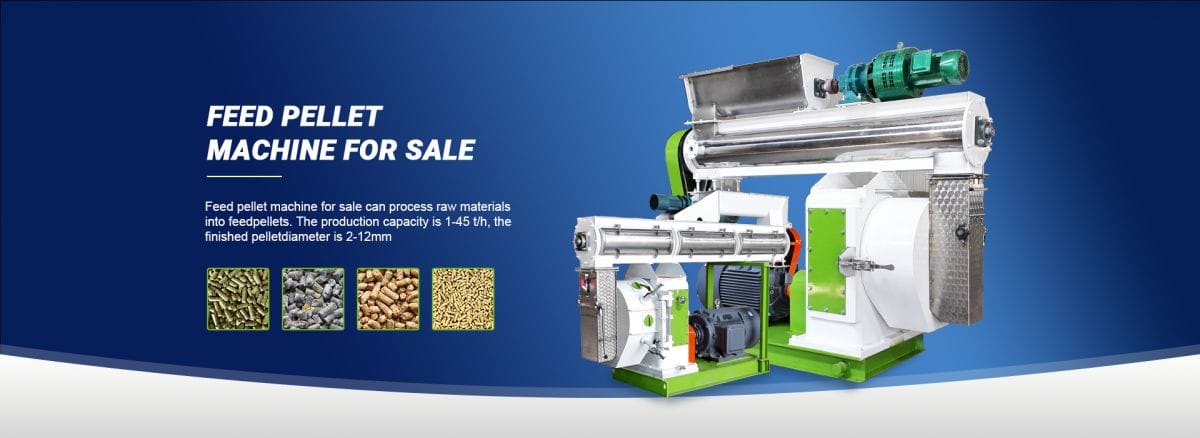
As an advanced feed processing equipment, the pig feed pellet machine improves the nutritional value and digestion and absorption rate of the feed by pressing the feed raw materials into pellets, and improves the efficiency and quality of feed processing. It has broad application prospects in animal husbandry and poultry breeding.








01
Screw feeder
The structure is similar to the batcher. The motor is frequency-regulated or speed-regulated, and there is a steam baffle at the feed inlet. The function of this machine is to evenly send the materials from the granulator bin to the conditioner, and the feeding speed can be adjusted according to the load of the main motor of the pig feed pellet machine. The material is stainless steel. The stability of the material flow has a great influence on the granulation quality.
The structure of the pig feed pellet machine feeder is mainly screw feeder, and its structure has variable diameter and variable distance in the feeding section to ensure uniform discharge of the silo.
The power equipment is generally 1.1-4.0kw, the diameter is 150-400mm, and the speed is 0-180r/min.
02
Conditioner
Its essence is a continuous mixer. The function of this stainless steel material conditioning machine is to fully mix steam and other liquids with powdery materials to improve feed quality and pelleting performance.
The main assessment indicators are conditioning time, water and liquid absorption, conditioning temperature, starch gelatinization degree and additional power.
03
Pelleting chamber
This is the core part of the pig feed granulator. The room is equipped with a ring die, a pressure roller and a pressure roller adjustment mechanism, a spreader and a cutter.
04
Door of pig feed pellet making machine
The door is a passage connecting the conditioner and the pelletizing chamber. Generally equipped with magnetic separator, grid screen, observation port, emergency discharge door (pneumatic), cutter and adjustment mechanism.
05
Transmission mechanism and transmission mode
Motor-gear drive-main shaft
Motor-belt drive-main shaft
The working principle of the pig feed pelletizer machine: The powdered material is a discontinuous combination composed of dispersed particles with fluidity. The prerequisite for being compressed into particles is that there is a gap between them.
Therefore, under the action of squeezing, the gap between the powder particles is reduced, the particles move closer to each other and rearrange, the bonding force increases, and finally it is pressed into a pellet feed with a certain density and a certain strength.
In this process, due to the action of steam, the starch in the feed is gelatinized, and the protein and sugar are heated to produce plasticity, so granulation is an extrusion-type thermoplastic process.
| model | SZLH250 | SZLH320 | SZLH350 | SZLH420 | SZLH508 | SZLH558 | SZLH678 | SZLH768 | SLZH858 |
| Output (t/h) | 1~2 | 3~4 | 5~7 | 8~12 | 10~18 | 15~25 | 20~30 | 25~40 | 28~45 |
| Main motor power (kw) | 22 | 37 | 55 | 110 | 160 | 180/200 | 220/250 | 250/280 | 315/355 |
| Main motor series | 4P | ||||||||
| Feeder power (kw) | 1.1 | 1.5 | 1.5 | 1.5 | 2.2 | 2.2 | 2.2 | 2.2 | 2.2 |
| Conditioner power (kw) | 1.5 | 2.2 | 3 | 7.5 | 11 | 11 | 11 | 11 | 15 |
| Ring die diameter (mm) | 250 | 320 | 350 | 420 | 508 | 558 | 673 | 762 | 858 |
| Finished pellet diameter (mm) | 2~12 | ||||||||
| Equipment Configuration | Ring die material: stainless steel Door cover of granulation room: 6mm /SUS304 Feed chute: 3mm /SUS304 Gear box: HT250 Gear: 42CrMo Gear shaft: 20CrMnTi Spindle: 42CrMo Empty shaft: 42CrMo Bearing: Import Oil seal: Germany/Taiwan Overload mechanical protection: safety pin Serpentine spring coupling drive Using Siemens Motor | ||||||||
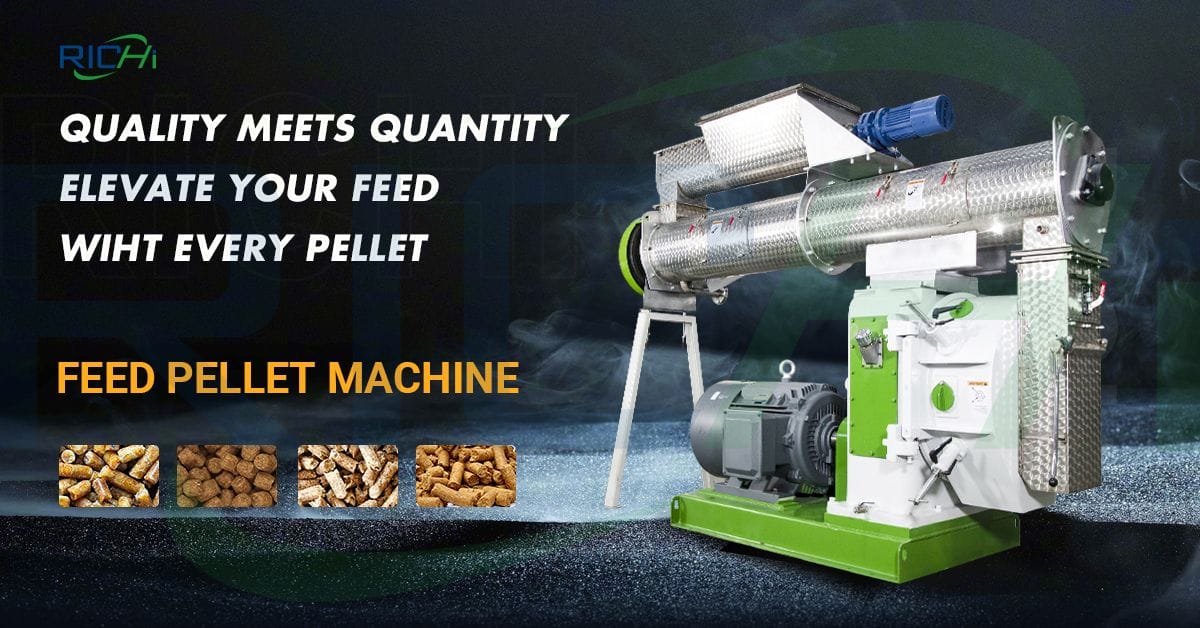
Pig Feed Pellet Making Machine Price: FOB 7,000-100,000 USD
What's ruminant animal feed pellet machine price? Because different customers have different requirements for pellets, there will be many differences in the details of our feed pellet machine design. Therefore, the actual pig feed pellet maker machine price for different projects are different.
Even if the customer wants to produce the same type of pellets, if the customer's feed formula, raw materials, and production technology are different, the pig feed pelletizer machine ring die, conditioner, etc. will be different.
When many customers inspect pig feed pellet machines, the first thing they ask is how much does your pellet machine cost? Because the price of the pellet machine is more intuitive, many customers put price first. In fact, it is not correct to ask this question. , because the potential "price" is often ignored, which will lead to cheap purchase and expensive maintenance later.
When choosing processing equipment such as feed pellet machines, try to choose equipment from well-known pellet machine manufacturers.
Regular manufacturers have complete procedures, advanced technology, many customer cases, relatively mature technology, and guaranteed later maintenance.



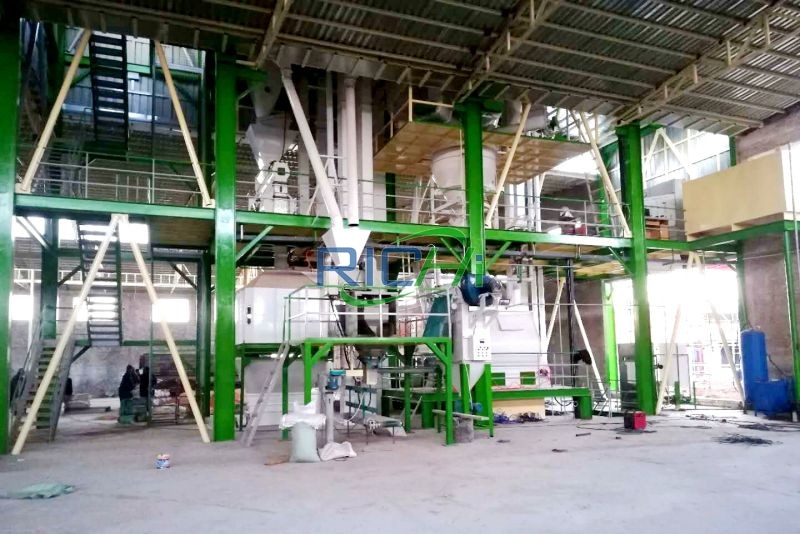
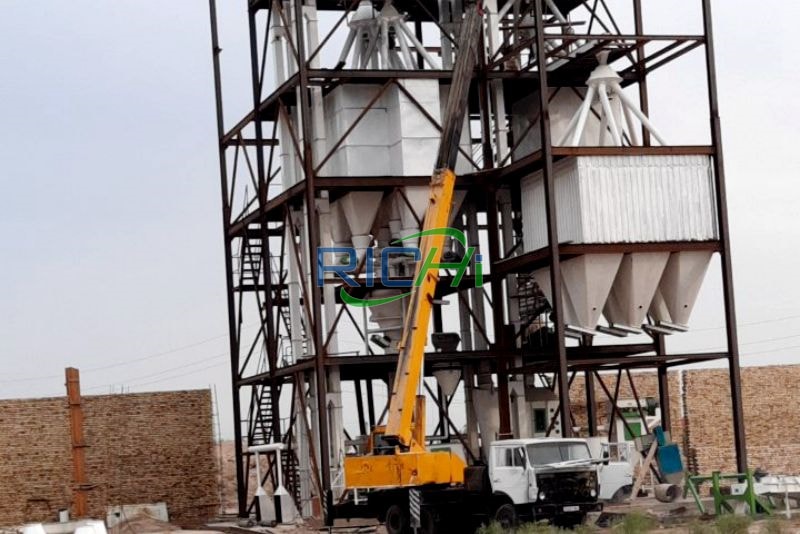


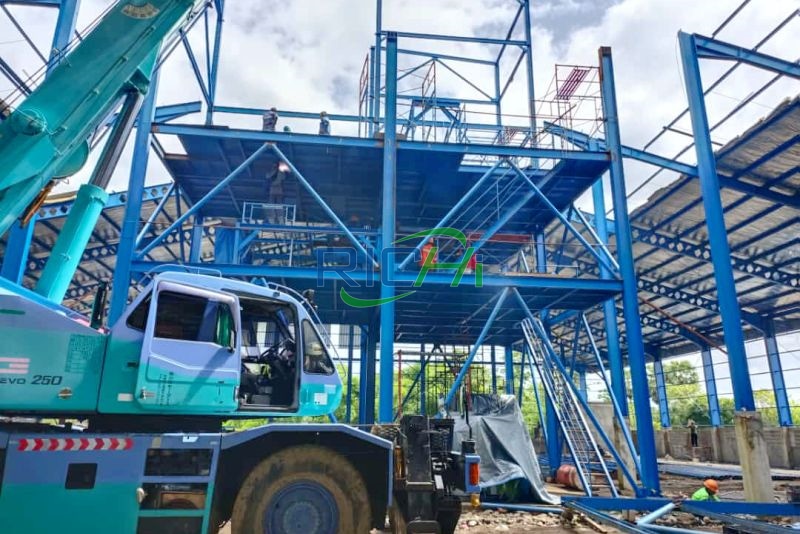
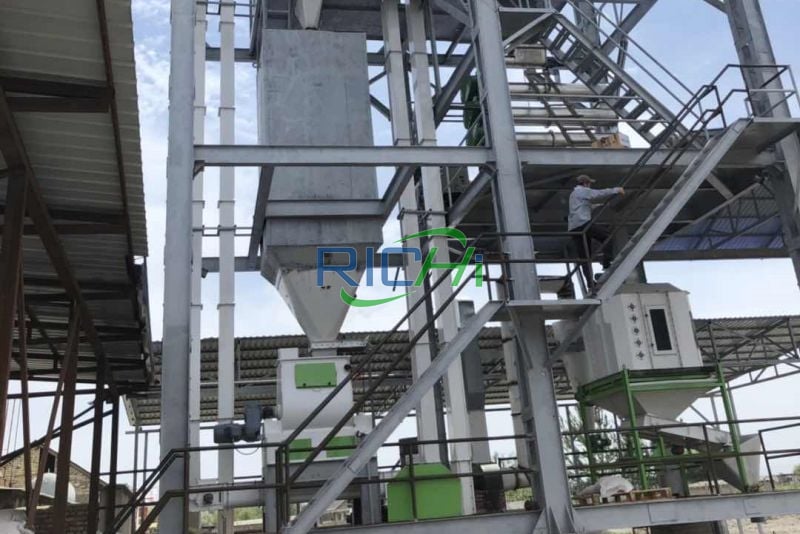
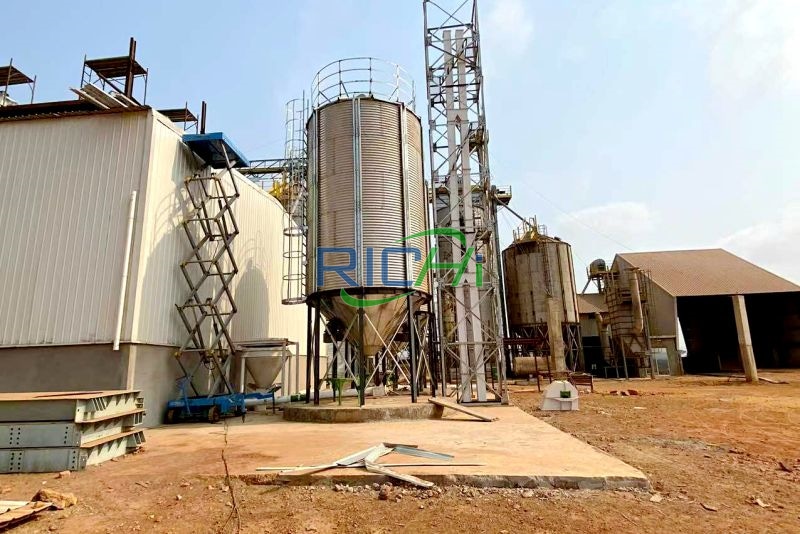

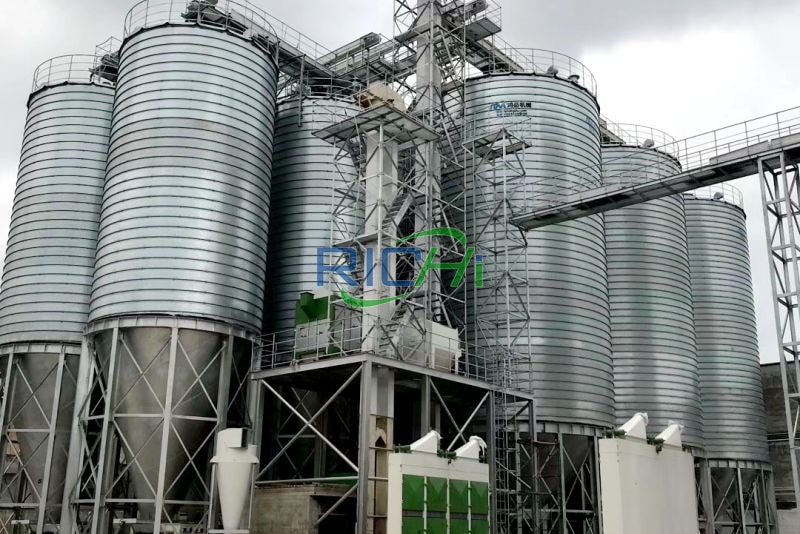
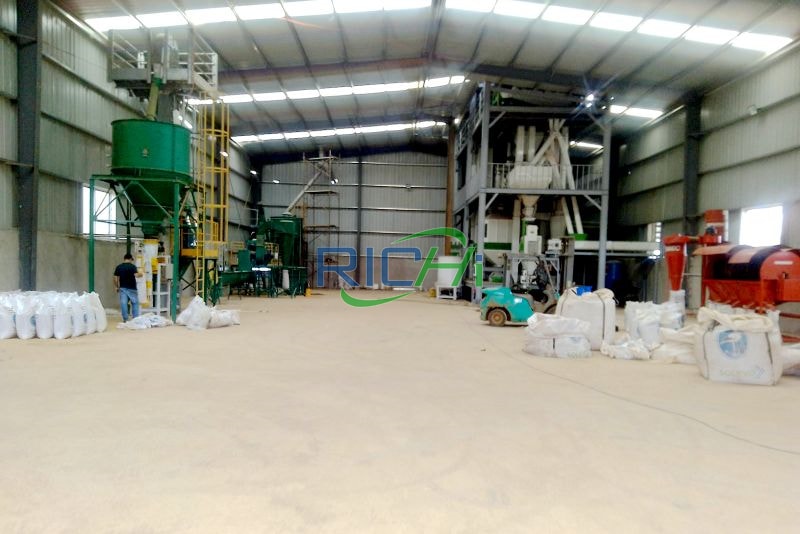
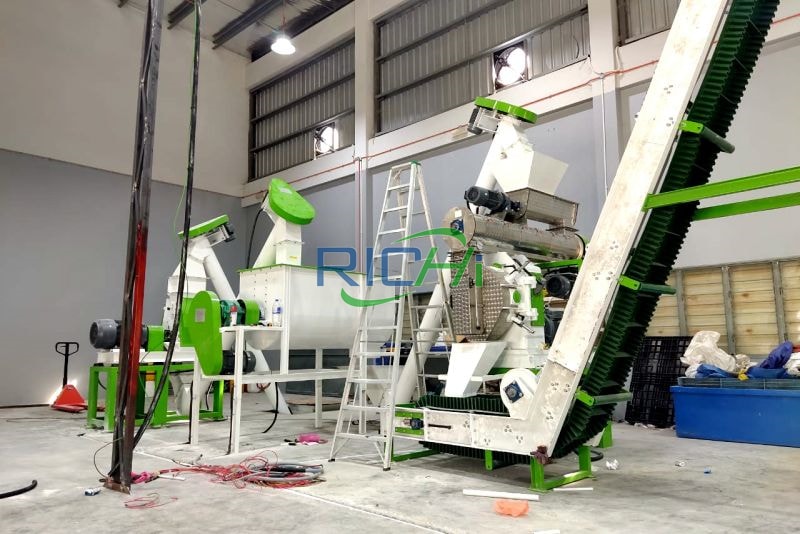
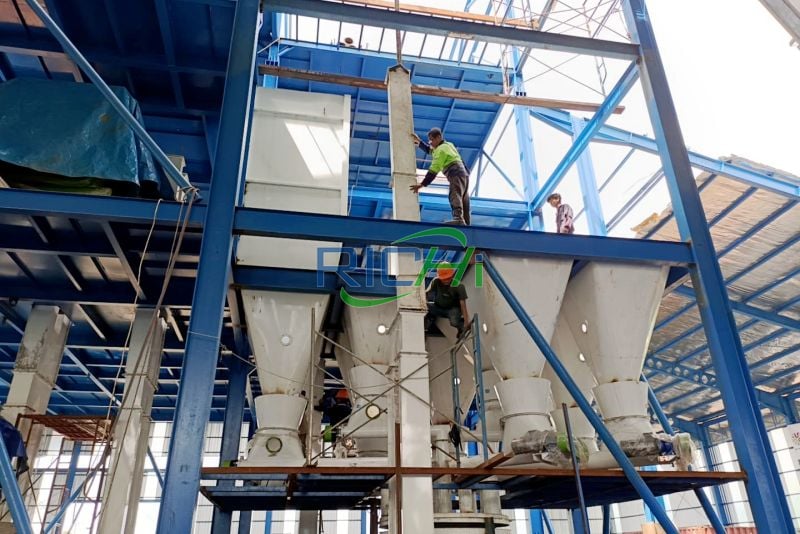
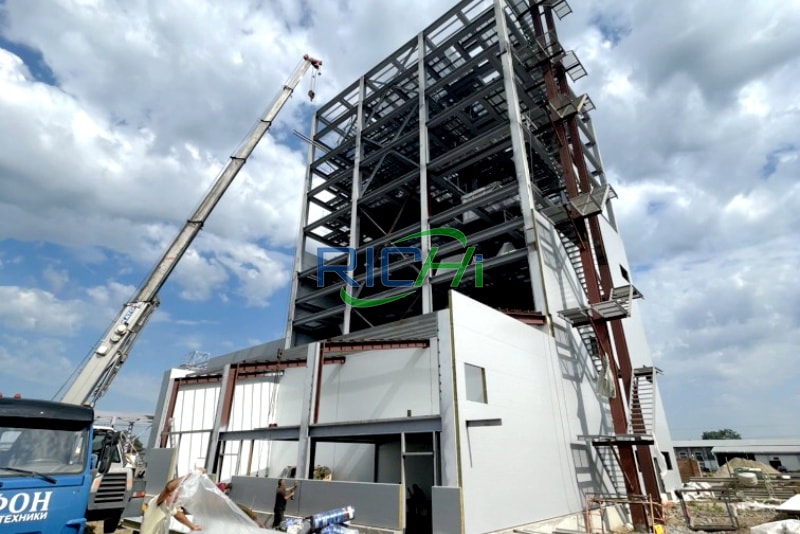
In livestock feed processing, the feed pellet machine is an essential piece of equipment. It can crush and compress various raw materials into feeds of different pellet sizes, providing convenience and efficiency to the breeding industry.
However, there are now many types of pig feed pellet machines on the market with different prices. How to choose a feed pellet machine that suits you? Here are the factors to consider when choosing a pig feed pellet machine.
To sum up, when choosing a pig feed pellet machine that suits you, you should comprehensively consider the machine model, production efficiency, brand, materials, power, cost, etc., and make a selection and judgment based on production requirements and actual conditions.
Pig feed production lines play a significant role in feed manufacturers and feed farms. RICHI Machinery conducts R&D and production according to the market. Break down the production line into the following processes:
01
Raw material crushing section:
02
Pig feed mixing section:
03
Pig feed pelleting section:
04
Pig feed pellet cooling section:
05
Pig feed pellet crushing section:
06
Pig feed pellet screening section:
07
Pig feed pellet packaging section:
Pig feed processing and production equipment play a vital role in modern breeding industry. In order to meet the needs of different customers, we provide a series of common matching equipment, including crushing equipment, feeding equipment, mixing equipment, granulating equipment, cooling and packaging equipment, etc. Not only are these devices fully functional, but they can also be tailored to customers' specific requirements, ensuring that customers' production needs are fully met.
Pig feed mill equipment and machines mainly involve the processing, pressing and mixing of materials. First, the material will undergo feed crushing to make its particles fine. Then, the material will be pressed by the pellet feed machine to form pelletized feed. Finally, the pellet feed is thoroughly mixed through a mixer to ensure the balance and nutritional value of the feed.





Pig feed mill equipment and machines mainly include the following types:
The above are the main supporting equipment for pig feed mill production. According to different production needs and scale, you can choose a suitable equipment combination. In order to meet the output needs of different customers, we provide production lines of different sizes.
These feed production lines are suitable for various customers such as large, medium and small feed manufacturers and large feedlots. By using advanced feed processing and production equipment, we can help customers improve production efficiency and reduce costs, while ensuring product quality and safety.
Richi Machinery have provided animal pig feed production lines, pig feed mills and single pig feed machines for thousands of feed manufacturers, and we hope that in the future, we can also help you successfully realize a high-efficiency, high-quality, and high-return feed production business.
The followings are some pig feed mill project proposal / pig feed production business plan/ pig feed plant project report for you:
When choosing a supplier of pig feed equipment, you need to consider multiple factors, including the supplier's credibility, professional capabilities, after-sales service, price, etc.
01
Understand the credibility of equipment suppliers
When choosing a pig feed equipment supplier, you must first consider its credibility. You can learn about a supplier's reputation and company culture by looking at its website, social media, and online reviews.
At the same time, you can also find out whether the supplier has ISO, CE and other international certification certificates, and you can also discuss the company's business exchanges with other peer companies to understand the company's position in the industry. All of this information can help you understand the supplier's credibility and expertise.
02
Consider the professional capabilities of suppliers
The expertise of pig feed equipment suppliers is one of the key factors. You need to speak to this supplier and consider whether they have the skills and experience required to meet your needs.
You can refer to the vendor's past track record and customer feedback, or you can ask them questions about their expertise and consider whether they can provide an appropriate solution.
03
Consider after-sales service
After-sales service is another factor that you must consider when choosing a pig feed equipment supplier. You must ensure that the supplier's after-sales service meets your requirements. Find out if they offer services such as extended warranties and repair support, and make sure they can provide prompt responses and provide support to customers when needed.
04
Consider price and quality
Of course, the price of pig feed equipment is also an important factor affecting your choice of supplier. You need to determine whether the supplier can provide you with high-quality equipment and services that balance your budget with the quality of the equipment.
Therefore, when selecting suppliers, pay equal attention to price and quality, and make a comprehensive selection based on the company's actual situation.
Choosing the right pig feed equipment supplier can make your purchasing process more efficient and successful. By understanding the supplier's reputation, professional capabilities, after-sales service, price and quality and other factors, choosing the right supplier will provide you with high-quality equipment and services, thus increasing the company's long-term interests.
With the development of science and technology and people's emphasis on food safety, feed production equipment is constantly being upgraded and optimized. Especially in the field of pig feed production, complete sets of production equipment have become the mainstream trend in the industry.
01
Intelligence is one of the main development trends of complete sets of pig feed production equipment.
By introducing advanced automation technology and artificial intelligence technology, the production process can be automated, digitalized and intelligent. This can not only improve production efficiency and reduce production costs, but also ensure the quality and safety of feed.
For example, by introducing smart sensors and data analysis systems, various parameters in the production process can be monitored in real time, problems can be discovered and dealt with in a timely manner, and the stability and efficiency of the production process can be ensured.
02
Environmental protection is also an important development trend for complete sets of pig feed processing equipment.
Under the current circumstances of increasing environmental pressure, how to achieve green and environmentally friendly feed production has become an important challenge facing the industry. To this end, many companies have begun to develop and promote environmentally friendly production equipment and technologies.
For example, using biotechnology for pig feed production can effectively reduce the impact on the environment; adopting a circular economy model to realize resource utilization of waste is also an effective environmental protection measure.
03
Energy saving is another important development trend of complete sets of pig feed production equipment.
As energy resources become increasingly scarce, how to achieve effective utilization of energy while ensuring production efficiency has become a problem that the industry must face. To this end, many companies have begun to develop and promote energy-saving production equipment and technologies.
For example, energy consumption can be effectively reduced by improving production processes and optimizing equipment structures; using new energy technologies, such as solar energy and wind energy, can also achieve clean energy conversion in the production process.
04
Customization is another important development trend of complete sets of pig feed production equipment.
Under the current trend of market diversification and personalization, how to meet the needs of different customers and provide personalized services has become the key to corporate competition. To this end, many companies have begun to develop and promote customized production equipment and services.
For example, we design and manufacture specialized pig feed production equipment according to customers' special needs; provide customized production processes and service processes to meet customers' individual needs.
In general, the development trend of pig feed making machines is mainly reflected in four aspects: intelligence, environmental protection, energy saving and customization.
These development trends will not only promote technological progress in feed production equipment, but also make important contributions to ensuring food safety, protecting the environment, saving energy, and meeting individual needs.
After the various raw materials of the pig feed are grinded and mixed, they can be used as powder for feeding or for further processing, and heating or pressure is usually required during processing. Making them into pellets is the most common method. The RICHI pig feed pellet making machine can be used to process pig feeds of different breeds and growth cycles, such as piglet feed, fattening pig feed, and sow feed.
Why feed pigs with pellets feed instead of powder feed?
01
High stability
Powdered feed is prone to damp, clumping, and even mildew; powdered feed is easily oxidized when exposed to the air for a long time, but the pellet feed has little contact with the air after being squeezed, and the storage time is relatively long. In addition, the pellet feed has been processed during the processing process, and the moisture-proof effect is good.
02
Good palatability
Pellet feed contains some condiments such as honey and oil during processing, and the diet of pigs will also increase; pigs like to eat plant rhizomes, and pellets are made of imitating plant rhizomes, which have relatively good palatability. In addition, Pellet feed is matured and extruded, which changes the feed structure, and the appetite of pigs will increase.
03
High feed conversion rate
Pigs' sense of smell is more sensitive than dogs' sense of smell. This feature can help them find food, even a few meters underground. So pigs always pick and choose when they eat feed. Some feed will be spilled, compared to powder feed, pellets feed will not cause excessive waste of feed, and can ensure the conversion of nutrients.
04
Reduce stratification
Pig farmers may find such a problem when using self-mixing ingredients. Some formulated feeds have stratification. Because the density and volume of various powders are different, there will be stratification when put together. This situation will lead to uneven nutrient distribution, which is not conducive to the growth of pigs.
In addition, the powdered feed is dusty, which is easy to infect pigs with respiratory diseases, and the pellets will not have such problems, thereby ensuring the health of the pigs.
05
Feed pellets are safer
Self-prepared feed is easy to be infected by bacteria, viruses, etc., because the raw materials may be contaminated during the process from harvesting to transportation to storage and preparation. Bring losses to the pig farm. The pig feed pellets are pellets made with steam and high temperature. During the pig feed pellet machine production process, the high temperature can effectively kill pathogens, which leads to the safety of the feed.
06
Feed pellets are easy to transport
The volume of powdered feed becomes smaller after compression, and it is better to transport than powdered feed, which can effectively save transportation and storage space.
The pellet hardness of pig pellet feed is an important indicator of the appearance quality of pellet feed. In the feeding process of some pig farms, it was also found that the hardness of pellet feed has a certain impact on the performance of livestock and poultry.
Throughout the whole process of pig pellet feed production technology, in addition to the pig feed formula, the pig feed processing technology that affects the pellet hardness of pellet feed includes: raw material crushing process; raw material expansion process; raw material mixing, water addition and oil injection process; steam pretreatment quenching and tempering process; selection of dies in the pig feed pellet machine granulation process; post-curing and post-spraying process; drying and cooling process.
01
The impact of crushing process on pig feed pellet hardness
The decisive factor in the crushing process for the hardness of the pellets is the crushing particle size of the pig feed raw materials. Generally speaking, the finer the raw material is crushed, the easier the starch is to gelatinize during the pig feed pellet machine conditioning process, the stronger the binding effect in the granules, the less likely the granules are to break, and the greater the hardness.
In actual production, according to different The production performance of animals and the size of the aperture of the ring die, the crushing particle size shall be adjusted appropriately, the suckling pig feed shall be finer, the crushed average particle size shall be 400-500μm, and the average particle size of the fattening pig feed shall be 600-700μm.
In the production of pig feed, the hardness of the pellets is generally required to be moderate. Too hard will reduce the palatability and production performance of the product, and too brittle will increase the powdering rate of the product, reduce production performance, and increase waste.
In the production of pig feed, it is generally required to crush more than 70% of the particle size between 700 and 500 μm, and more than 20% of the fine powder below 250 μm. Such a particle size distribution is conducive to the granulation and shaping of the pellets and the improvement of the appearance quality of the pellets, and can ensure the proper hardness of the product and a lower powdering rate.
02
The impact of raw material expansion process on pellet hardness
Through the puffing and swelling treatment of the raw materials, it can destroy the anti-nutritional factors in the raw materials, remove the toxins in the raw materials, kill bacteria, eliminate harmful substances, denature the protein in the raw materials, and fully gelatinize the starch. The gelatinized starch has a significant effect on the hardness of the pig feed pellets.
At present, the extruded raw materials are mainly used in the production of high-grade suckling pig feed and special aquatic feed. For suckling pig feed, the pellets are required to be crisp and not too hard, which is conducive to the feeding of suckling pigs. However, the puffed suckling pig pellets have a larger gelatinization degree of starch, so the hardness of the granulated pellets made by pig feed pellet machine is also larger, and the hardness of the pig feed pellets should be reduced by other means.
03
The influence of raw material mixing, water addition and oil injection process on the hardness of pellets
The mixing of raw materials can improve the uniformity of various pellet size components, which is beneficial to keep the hardness of the pellets basically the same and improve the product quality. The process of adding water in the pig feed mixer is still a problem that is being actively explored. In the production of hard pellets, adding 1% to 2% of water in the animal feed mixer is beneficial to improve the stability and hardness of the pellets.
However, due to the increase of moisture, it has a negative effect on the drying and cooling of the pellets. It is also unfavorable for product storage. In the production of wet pellet feed, up to 20%-30% of the water can be added to the powder, and it is easier to add about 10% of the water in the mixing process than in the conditioning process.
The formed pellets of high-moisture materials have low hardness, softness, and good palatability, which can improve the production performance of pigs. This kind of wet pellet feed made by pig feed pellet forming machine can be used in large-scale breeding enterprises. Wet pellets generally cannot be stored, and are generally required to be produced and fed.
Adding grease in the mixing process is currently a grease addition process commonly used in feed production workshops. The addition of 1% to 2% of grease does not significantly reduce the hardness of the pellets, and the addition of 3% to 4% of grease can significantly reduce the hardness of the pellets.
04
Influence Of Steam Conditioning Process On Pellet Hardness
Steam conditioning is a key process in the processing of pellet feed by pig feed pellet machine. The quality of the pig feed pellet mill conditioning directly affects the internal structure and appearance of pellets. Steam quality and conditioning time are two important factors that affect the conditioning effect. High-quality dry saturated steam can provide more heat to increase the temperature of the material and gelatinize the starch.
The longer the conditioning time, the higher the starch gelatinization degree, the denser the formed particle structure, the better the stability, and the better the hardness. Bigger.
For general pig feed, by adjusting the amount of steam added, the tempering temperature is maintained at 70-80°C, and the tempering time is controlled at about 30 seconds by changing the length of the pig feed making machine conditioner, blade angle and rotation speed. For high-end pig feed, double-layer or multi-layer jacket conditioner are generally adopted to increase the conditioning temperature and extend the conditioning time.
05
The influence of the pig feed pellet machine ring die on the pellets hardness
The technical parameters such as the aperture and compression ratio of the pig feed pellet mill ring die can significantly affect the hardness of the pellets. The hardness of the pellets formed by the ring die with the same aperture but different compression ratios increases significantly with the increase of the compression ratio.
Choosing a suitable compression ratio ring die can produce pellets with suitable hardness. The length of the pellets has a significant impact on the pressure-bearing capacity of the pellets.
For pellets of the same diameter, if the particles have no defects, the longer the pellet length, the greater the measured hardness. Adjusting the position of the pig animal feed pellet machine cutter to maintain a proper pellet length can keep the hardness of the pellets basically the same. The cross-sectional shape of the pellet diameter also has a certain effect on the hardness of the pellets.
The 8-shaped cross section has a stronger pressure bearing capacity than the circular cross section, and the measured hardness value is also greater. In addition, the material of the pig animal feed pellet making machine ring die also has a certain influence on the appearance quality and hardness of the pellets. There is a significant difference between the pellets produced by ordinary steel ring dies and stainless steel ring dies.
06
The influence of drying and cooling process on pellet hardness
In order to extend the storage time of pig feed products and ensure product quality within a certain period of time, the pig feed pellets need to be dried and cooled as necessary.
In the test to determine the hardness of the pellets, the hardness of the pellets was measured after cooling the same product for 5 minutes, 10 minutes, and 15 minutes several times. It was found that the hardness of the pellets with low hardness was not significantly affected by the cooling time, but the hardness was higher.
Larger pellets decrease in hardness as the cooling time increases. This may be because as the water inside the particles is lost, the brittleness of the pellets increases, which affects the hardness of the pellets. At the same time, the particles are rapidly cooled by large air volume (cooling time is 3 minutes) and small air volume (the air door is closed to one third) and slowly cooled (cooling time is 20 minutes).
It is found that the hardness of the former is lower than that of the latter. The surface cracks of the pellets have increased. In addition, it is worth mentioning that crushing large hard pellets, turning large pellets into small crumbled pellets, can significantly reduce the hardness of the pellets.


Introduction of RICHI
Strength certification
Richi Machinery is a professional manufacturing enterprise integrating scientific research and development, manufacturing, sales and service. We have developed and manufactured multifunctional pelletizers, grinders, mixers, dryers and more than ten categories and more than 30 models of complete machine products are widely used in feed, biomass, organic fertilizer, pet supplies, solid waste recycling, chemical industry, road construction and other fields.
All RICHI products have passed ISO9001:2008 international quality system certification, EU CE certification and Customs Union CU-TR certification, successfully serving more than 2,000 customers in more than 100 countries and regions around the world.
In RICHI, every equipment and every pellet production line business plant can be customized. We will formulate multiple sets of pellet production process plans for comparative analysis according to the actual needs of customers, select a reasonable plan, and realize private customization.
Our services run through all aspects of on-site terrain and environment survey, production line process design, raw material testing, cost requirement analysis, project investment budget, equipment installation and commissioning.




Quality Control
Richi Machinery
We adhere to the ISO9001 quality management system, and strictly implement international standards for product design and manufacturing processes. In terms of management systems, there are product quality accountability systems, product quality accountability systems, and safety production management systems; in terms of management tools, QC quality control management, SPC statistical process control, sampling inspection and measurement system analysis are used for quality control, to achieve effective control of the entire process of equipment production, and never let go of any quality hidden dangers that may affect customer operations.

RICHI has always been adhering to the spirit of craftsmanship to make every detail good, especially in the link of equipment preparation and delivery, we follow the standardized process: preparation order check-equipment factory quality inspection-packing list re-inspection-scientific packaging and transportation, ensure the safe and non-destructive delivery of equipment.
According to customer needs, RICHI installation engineers will guide the construction of site infrastructure, equipment installation and commissioning and trial operation of the entire production line throughout the process. When the relevant project indicators reach the design standards, the client will carry out the project acceptance.









After-sales And Training
Richi Machinery
We have built a team of nearly 100 technical engineers to solve a series of problems in the project from consultation, site survey, sample analysis to plan design, installation and commissioning, and maintenance. We provide comprehensive and systematic training for the technical staff of each customer to better serve the customer's project needs.
After the technicians have finished their studies, RICHI will provide follow-up technical support services, and the training engineers will follow up the project use effects in the later stage to ensure the stable operation of the customer's project.